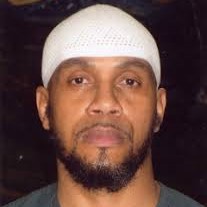
b: 1963
Siddique Abdullah Hasan
Summary
Name:
Years Active:
1993Birth:
January 04, 1963Status:
Awaiting ExecutionClass:
MurdererVictims:
1Method:
Complicity / StrangulationNationality:
USA
b: 1963
Siddique Abdullah Hasan
Summary: Murderer
Name:
Siddique Abdullah HasanStatus:
Awaiting ExecutionVictims:
1Method:
Complicity / StrangulationNationality:
USABirth:
January 04, 1963Years Active:
1993bio
Siddique Abdullah Hasan was born Carlos A. Sanders on January 4, 1963. Not much is publicly documented about his childhood, family background, or early adult life prior to his incarceration. What is known is that Sanders converted to Islam in prison and took the name "Siddique Abdullah Hasan" as part of his religious and personal transformation.
By the early 1990s, he had become a recognized spiritual leader within the Black Muslim inmate community at the Southern Ohio Correctional Facility in Lucasville. His position as a spokesperson during the turbulent environment leading up to the 1993 riot placed him in the center of one of the most historically significant prison uprisings in American history.
Hasan was known for his articulate manner and leadership qualities, and within the prison walls, he served as a de facto representative during the tense days of the standoff. His faith and identity as a Muslim were central to his stance against forced tuberculosis testing, which he and other inmates objected to because the test contained phenol, a compound that Muslims believe is forbidden under Islamic dietary and health laws.
murder story
On April 11, 1993, during Easter Sunday, 450 inmates at the Southern Ohio Correctional Facility erupted into a violent, coordinated riot. The rebellion, which lasted 11 days, saw rival gangs, the Gangster Disciples, Aryan Brotherhood, and Black Muslims, unite in protest against what they called brutal conditions, overcrowding, and religious discrimination within the prison system.
At the center of the riot was the issue of mandatory tuberculosis testing, which the Muslim community inside the prison resisted due to religious objections to the chemicals used. As a prominent figure among the Muslim inmates, Siddique Abdullah Hasan emerged as one of the main negotiators during the standoff.
The riot quickly turned deadly. Nine inmates were killed, many of them accused of being informants, and on April 15, 1993, Correctional Officer Robert Vallandingham, a hostage, was murdered. According to prosecutors, Officer Vallandingham was strangled with a weightlifting dumbbell bar or a ligature, though medical testimony later disputed the use of a bar. Dr. Richard Fardal, Deputy Coroner of Franklin County, stated there was no trauma to the trachea or voice box, confirming death solely by ligature strangulation.
Though testimonies varied and no direct physical evidence tied Hasan to the actual act of murder, he was charged and convicted of organizing and orchestrating the killing. Hasan has maintained his innocence, stating that he was working to negotiate peace during the riot, not violence. He was sentenced to death and became one of the five men labeled the "Lucasville Five", those viewed as leaders of the riot and held most responsible for its deadliest outcomes.
Years after the riot, on January 3, 2011, Hasan and fellow death row inmate Bomani Shakur (Keith LaMar) launched a peaceful protest from their cells in the Ohio State Penitentiary. Living in solitary confinement for 23 hours a day with little to no privileges, they began a twelve-day, liquid-only hunger strike demanding equal treatment to other Ohio death row inmates.
On January 4, Jason Robb joined the strike, further amplifying the protest. The trio asked for basic human rights: contact visits with family, daily phone calls, and the ability to purchase additional food and clothing from the commissary. At first, Warden David Bobby refused to meet their demands. But by January 14, under mounting public pressure, including support from the ACLU, legal scholars, and human rights organizations, the prison administration agreed to the changes.
By January 15, all three had ended their hunger strike after receiving written confirmation of the policy shifts. It was one of the most successful examples of non-violent inmate protest resulting in direct reform in Ohio’s prison system.
Following multiple relocations of Ohio's death row units, Hasan and three other members of the Lucasville Five remain incarcerated at the supermax Ohio State Penitentiary (OSP) in Youngstown. Inmates with lower security risk profiles were transferred to other facilities over the years. As of 2024, most death row prisoners reside at Ross Correctional Institution. Hasan, however, continues to be held at OSP under high-security restrictions.